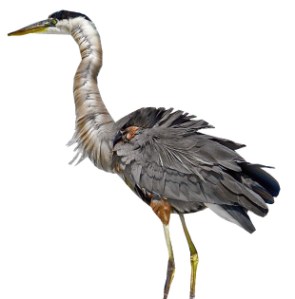
At the end of our winter stay in Florida, we’re busy packing—but this is also the mating season for royal terns, so I’m busy.
Matings
I almost never see the need for records, but I’m keeping them for the number of royal tern matings that I witness. The beach is full of these large yellow-billed terns. On my last two mornings on the beach, I witnessed 27 and 17 matings, respectively, bringing my total for the season to 168. Some matings are as long as two minutes while many last a minute.
Some last just seconds and are partials or what I think may be practice sessions, while yet others are clumsy attempts, which go nowhere like the one I witnessed on the last morning. A male sandwich tern leaped onto a female’s head instead of on her back, driving it into the sand. Ow.
What I’m really interested in is predicting when a mating will occur. I soon learn that I can’t predict which terns would mate and when they will, but I have a decent guideline. Look for a pair that have wing joints out and are slowly circling each other, particularly on the edge of a group. However, just in front or off to the side or anywhere else, one or more matings may be in process. More importantly mating takes place in a large noisy group. There are loud “clacking” sounds, but crucial to a mating starting is the incessant noise that sounds like a soft beeping alarm clock, which has occurred almost ever time I saw a mating begin.
Until the last morning I had no idea who was doing it until I saw a circling female opening and closing her bill, making that sound. I also saw a male atop a female royal who wasn’t yet in wing-flapping mode opening and closing its bill making the same sound. In her case it may mean ”I’m ready, let’s go” and in his case “I’m warming up.” Now I understand the significance of this sound in the mating process. It’s a big piece of the puzzle of mating, but it’ll have to wait until next year.
The Unexpected
On the next to last morning I’m finished watching a mating in the water and nearby is a great blue heron. It’s in light green water halfway up it’s long gray legs with its neck stretched out to maximum length. The sight of the 46-inch bird is arresting, weird and a bit comical. The heron gets a small fish and walks toward shore to swallow it then goes back to stealthily hunt. I follow near the blue, who steadily lets me get so close that I won’t go any further. Often a hungry bird will allow a short distance as long as the person doesn’t make noise or sudden moves. But this is the exception, not the rule. If I fell over sidewards now, I might touch it but I’d never allow myself to get that close. For a few minutes an intense thrill runs through me to be in such close proximity to another sentient creature. Moments like this are one of the reason that I bird and the experience resonates within me long after it’s over.

The last morning walking onto the beach, there’s a commotion in the water and people are staring out because there are at least three bottle-nosed dolphins frolicking or feeding. Dark gray backs raise fins out of the water, submerge and reappear frequently. Whole tails rise up and smack the water, creating a sound that adds to the moment, especially from one that is very close to shore. Fun or fury, it’s hard to tell from seeing only part of these intelligent creatures. The mystery of the depths. Turning around there are two royals and one is eating a fish. Is this the acceptance of a mating gift by a female or the results of a rejection? The eater flies and is quickly followed by the other in a swift aerial display.
There are a flock of eight large, dazzling white birds. They are great egrets coming over the beach in single file, then spreading out horizontally as they go toward Sarasota Bay. Their large flashing white bodies remind one of enormous snow flakes. They are probably migrating north after winter in the south. These birds, like other waders, were shot by plume hunters in the late 19th century for ladies’ hats when their feathers were worth more than the price of gold. They have since recovered and have some interesting symbolic notoriety, some of it monetary. The great egret was chosen as the symbol of the National Audubon Society. The image of one is on the reverse side of Brazil’s 5 reais note. Belarus has a commemorative coin with its image. Finally, it is on the New Zealand $2 coin.
Time To Go
Yesterday after crossing the street from the beach, a man on a bike who was in my birding class comes over to me. He wants to say thanks for the class, which apparently helped him focus on and enjoy birds. I know this as he said it at the end of the last class. I feel really good about this. My friend Barry, a superb birder, from Thunder Bay, Ontario, is driving home tomorrow. I need to send him some images that I took of a memoriam he wrote in the sand for his late father. I start to leave the beach for the last time, but can’t. In past years, this has never happened. My weak excuse now is a crow on a dune that might make a good photo. It flies when I get back. No more excuses, it’s time to go.































